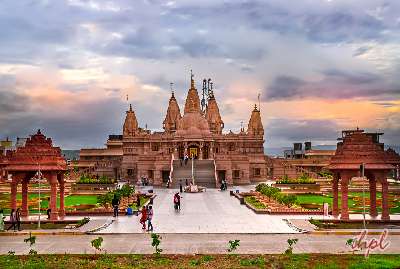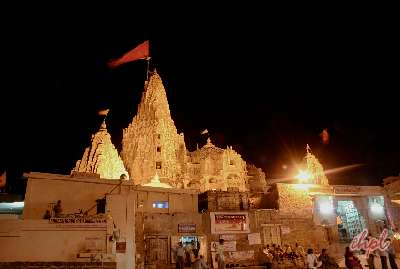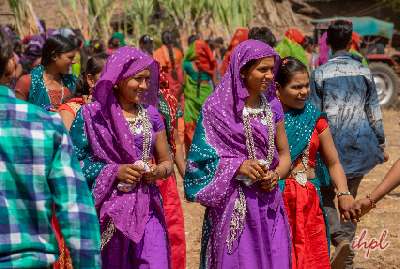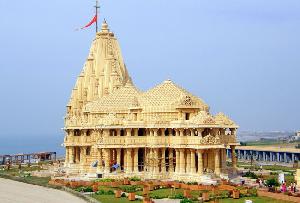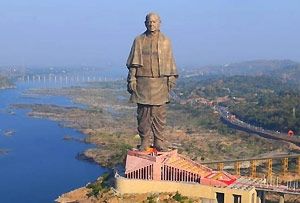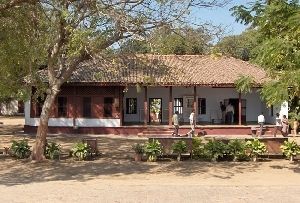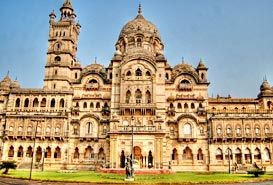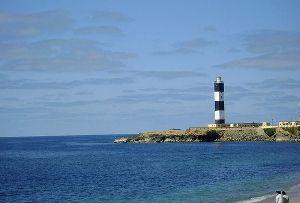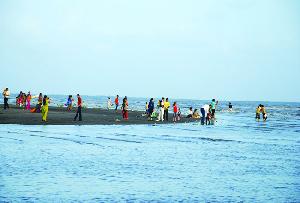The holy places in India have always played a significant role in boosting the tourism of a particular destination. For the spiritually inclined ones, paying visits to holy and sacred places is the primary reason they embark on a religious tour to Gujarat. But it is difficult, even for pleasure seekers, to ignore the deep religious significance of the holy places.
Gujarat boasts some of the most ancient holy places, including Dwarka, which needs no introduction. Falling in the league of the most famous holy places in Gujarat is the temple of Somnath. The temple has a mystic appeal, and this has a lot to do with the legend of Chandra, the Moon God. This shrine dedicated to Lord Shiva enjoys unique importance among the twelve famed Jyotirlingas of Lord Shiva.
Palitana warrants special mention among all the other Gujarat holy places. Touted as a highly revered pilgrimage site for the Jains, Palitana boasts 863 temples, all located atop the Shatrunjaya hill. The construction of all these temples at an altitude of 603 meters is a mammoth feat. Some temples are made of marble, and their origin can be traced back to the eleventh century.
Pavgadh in central Gujarat boasts temples dedicated to the goddess Mahakali and Bhadrakali. In addition, Ambaji and Becharaji are highly revered deities among the Gujaratis, and the shrines dedicated to these goddesses are famous centers of pilgrimages for the Hindus.
Explore 7 days gujarat tour package
Shiva Temples in Gujarat
Like the rest of India, Gujarat also has Shiva followers. Gujarat Shiva Temples receive devotees from across the country seeking blessings from Mahadev and simultaneously educate travelers about ancient India’s rich culture and heritage. Some remarkable Shiva Temples in Gujarat immaculately blend the Jain style of architecture with different architectural styles.
The temples of Shiva in Gujarat are exquisitely built with stone carvings and vibrant interiors and have bejeweled deities installed. In addition, each Shiva temple has beautiful religious art on the wall with interesting legends. Along with the positive aura, the Shiva Temples of Gujarat offer scenic views and let the pilgrim soak in serenity.
Here are the top Gujarat Religious Places you can visit on your tour.
Somnath Temple, Saurashtra
One of the most esteemed temples of Shiva in Gujarat, Somnath Temple is more than a religious site. The stunning architecture of the temple catches the attention of millions of travelers and devotees across the globe. Moreover, the temple is an example of important historical events, ascending and descending of several dynasties and numerous destructive attacks. Hindus highly revere this temple as it is one of the 12 jyotirlinga temples of Lord Shiva. Moreover, it is one of the primary aspects of Gujarat Tourism. So, if you are on a Gujarat tour, it will be unfair not to visit Somnath Temple.
Also, it is essential to know that non-Hindus must take special permission from the temple authorities to enter the temple.
A museum near the Somnath Temple in Gujarat has preserved architectural remains. You can witness more than 1638 exhibits between the 7th and 15th centuries from the period of Vallabhi rulers.
The architecture of Somnath Temple
Somnath Temple in Gujarat was constructed before the start of the Common Era and has been destroyed six times by invaders and then restored by kings. The temple you see today was restored in 1951 in the usual Chalukya style of temple architecture. People believe the temple is built at such a location that no land is found in a straight line between Somnath and Antarctica.
The temple has a balconied corridor, and a mutilated form of the dancing Shiva called Nataraja. Further, there’s a flat on the temple’s tower with symbols of Nandi and Trishul. You can see the Jain influence on the carvings and the overall design.
Dwarkadhish Temple, Dwarka
Dwarkadhish Temple is located in Dwarka in Gujarat and is set atop a hill that can be reached in around 50 steps. Dedicated to Lord Krishna, the temple is believed to be built some 2500 years ago by Lord Krishna’s great-grandson, Vajranabh. Devotees believe that Dwarka was submerged under the sea 6 times, and what we see today is its 7th avatar. Originally, Mahmud Begada built this temple, but then it was rebuilt in the 15th and 16th centuries. Moreover, Adi Shankaracharya, an 8th-century Hindu philosopher, also honored the temple.
The architecture of Dwarkadhish Temple
The temple complex features several sculpted walls that encircle the sanctum where Lord Krishna’s idol is installed. As you go around the temple complex, you shall find smaller shrines. However, walls are the main highlight, showcasing detailed carvings of mythical characters and legends. A spire (pointed structure on a building’s or a tower’s top) about 43 m high is topped with a flag made from 52 yards of cloth, fluttering from the Arabian Sea’s breeze.
“Swarg” (heaven) and “Moksh” (salvation) are the names of two doors for entry and exit of the temple. Sudama Setu is a bridge, open between 7 am to 1 pm and then from 4 pm to 7.30 pm, at the temple’s base to cross the Gomti creek towards the beach.
Browse through our Gujarat Tour Packages from Chennai, Gujarat Tour Packages from Hyderabad, Gujarat Tour Packages from Mumbai, Gujarat Tour Packages from Pune, Dwarka Tour Package from Kolkata
Swaminarayan Akshardham Temple, Ahmedabad
Among India’s most prominent temples, Swaminarayan Akshardham Temple in Gandhinagar, Gujarat is an important pilgrimage site for many Hindus. Dedicated to Lord Swaminarayan, the temple acts as a cultural center and spreads the teaching and philosophies of Bhagwan Swaminarayan. BAPS Swaminarayan Sanstha built this temple in Delhi. The temple was completed after 13 years and inaugurated on October 30th, 1992. An interesting fact to know about Akshardham Temple in Gandhinagar is that it is set in a 23-acre complex’s center, built from 6,000 metric tonnes of pink sandstone imported from Rajasthan.
The architecture of Swaminarayan Akshardham Temple
The main complex of the temple is about 108 feet high, 131 feet wide, and 240 feet long. There are about 97 intricate carved pillars and 17 domes. There are also 8 balconies, 220 stone beams, and 264 sculpted figures. At the temple’s central chamber stands a 7-foot-tall image of Swaminarayan.
The beauty of this magnificent temple can be seen in its architecture, made by some of the most skilled artists. An important thing to note is that Akshardham Mandir is built according to Vedic architectural principles. Therefore, no steel or iron has been used in its construction.
Bala Hanuman Mandir, Jamnagar
Renowned for its splendid design, Bala Hanuman Mandir is located in Jamnagar, Gujarat. It has earned its place in the Guinness Book of World Records due to the chanting of ‘Sri Ram Jai Ram Jai Jai Ram’. The main deities of the temple are Lord Hanuman, Ram-Lakshman, and Janakji. All the idols are in the center, while Hanuman Ji’s are at the side. Bala Hanuman Mandir’s importance is that the good deeds of Lord Hanuman have led to the never-stopping chanting of the ‘Ram Dhun’ in the temple. You can visit throughout the night as it remains open, so those who want to contribute to the good work can do it anytime.
The architecture of Bala Hanuman Mandir
Compared to other temples, the architecture of Bala Hanuman Mandir is relatively modern. Built on the southeastern side of Ramnal Lake, the structure of this temple displays beautiful architecture with carved pillars. The temple is built in such a way that it endured natural disasters like earthquakes, cyclones, and cross-border invasions.
Rukmini Devi Temple, Dwarka
Rukmini Devi Temple in Dwarka, is among the rare temples dedicated to Lord Krishna’s wife and an incarnation of Lakshmi, Rukmini. People believe that if you are Dwarka, visiting Rukmani Mandir is a must; otherwise, your journey will not be completed. Besides, a legend says this temple is about 2500 years old, but historical findings point to the Rukmini Devi Temple’s establishment in the 12th century. Unlike many other temples worldwide, water is the main prasad here.
The significance of Rukmini Devi Temple is connected to the curse of Rishi Durvasa. While pulling Durvasa’s chariot, Rukmini got thirsty and drank water without offering it to her guest (Durvasa) first. As a result, this angered him, and he forced Rukmini to be separated from her husband, Lord Krishna. Therefore, there is no freshwater source in Dwarka. Thus, the donation of drinking water here is considered sacred.
The architecture of Rukmini Devi Temple
Rukmini Temple displays simple but enchanting architecture. There are lovely carvings, and the temple has characteristics of the Nagara style of architecture, which is common in many temples across western and northern India. Rukmini Temple is built on a high platform with an open Pradakshina Patha for the circumambulation of the temple. The outer walls are carved beautifully, displaying human forms called Naratharas, elephants called Gajatharas, and images of Lord Vishnu.
Nageshwar Temple, Dwarka
Visit one of the 12 jyotirlingas in India, Nageshwar Temple. Dedicated to Lord Shiva, it is located on the route between Gomati Dwarka and the Bait Dwarka Island on the coast of Saurashtra. The temple is also called Nagnath Temple. As per the Shiva Purana, anyone who prays at this temple is believed to get rid of all poisons, snake bites, and worldly attractions. Unlike other Nageshwar Temples, Lord Shiva’s idol faces south here. You can see the 80 feet tall statue of the lord. The Shivling is made of stone, also called Dwarka Shila, and has chakras.
The architecture of Nageshwar Temple
Nageshwar Temple in Dwarka is among the holy places in Gujarat and showcases a western style of architecture. It follows the principles of Vaastu Shastra and is planned on the sleeping or Sayanam posture of the human body. Mainly, the temple has 5 parts.
- Mahadwar (feet)
- Entrance Porch (hands)
- Sabha Mandapa (abdomen and chest – prayer hall)
- Antarala (Nandi’s Place)
- Garbhagriha (head – inner sanctum)
Shiva Temple, Bavka
Located in a remote village in Bavka, Shiva Temple is famously known as the “Khajuraho of Gujarat” because of the numerous erotic sculptures carved on its walls. Apart from being one of the top Shiva temples in Gujarat, it is known for its majestic architecture. It stands on a small hill near Hirlav Lake and ruins today. The temple was built during the Solanki era and had a legend behind it. A temple dancer called devadasi is said to have established this Shiva Temple in just one night. But later, an inscription was found saying the temple was built in the 10th century. Today, the temple is damaged, but its rich history brings many travelers here.
The architecture of Bavka Shiva Temple
The temple is a fine example of Māru-Gurjara architecture. It is an east-facing panchayatana-type temple complex with the temple in the center and four shrines in four cardinal directions. Bavka Shiva Temple resembles the temple at Sunak but is large. The jalaka work of the minor shringas of spire (shikara) looks similar to that of Miani (in Rajasthan), which helped determine its date. The temple’s outer walls have carvings of gods, goddesses, and celestial beings like apsaras.
If you want to visit these holy places in Gujarat, book Gujarat tour packages by Indian Holiday. These tours includes meals, transfers, accommodations, and temple visits and can be customized as per your preferences.
More informational Links:
Check out Gujarat Tour Packages, Sasan Gir Tour Packages, Kutch Tour packages, Vadodara Tour Packages, Porbandar tour packages, Somnath Tour Packages, Palitana Tour Packages, Saputara Tour Packages



